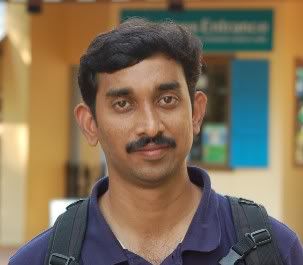`RDX' hits Chennai theatre
Chennai: Chennai's Sathyam Cinemas has become the first in India to use high-definition digital movie projection technology when it launched its RDX with the premier of Star Wars III-Revenge of the Sith.
RDX stands for `real digital experience.' Sathyam uses DLP Cinema technology developed by Texas Instruments. The benefits are crystal-clear image, rich sound and vibrant colour, and no dust, scratches, jumps and flickers as there is no film involved, it is claimed.
Addressing a news conference, S.V. Swaroop Reddy, Director, Sathyam Cinema, said many Hollywood films shot in the digital mode could not be screened in India till now due to the lack of this technology.
In the Sathyam multiplex, Sathyam and Sree theatres are equipped with RDX. They will charge a premium on tickets for the digital movies being screened there in the first two weeks of their release, Reddy added.
To a query, a spokesperson said Sathyam had branded RDX so because the word `digital' is much misused and branding attempts to convey the difference.
Also, the cinema has plans to bring in more technology under this brand by and by.
Worldwide, there are 365 screens, which use DLP Cinema, said S. Ganesh, Manager (Business Development - DLP Products), Texas Instruments.
DLP Cinema is the only projection technology compliant with the standards prescribed by digital cinema initiative, a consortium of major Hollywood studios including Disney, Paramount, Universal, Warner Bros, MGM, Sony & 20th Century Fox, he added.
According to him, DLP Cinema comes with excellent contrast and colour capabilities (35 trillion colours, to be precise) and facilities to add sub-titles and graphic elements.
As of now, DLP Cinema holds 100 per cent market share for high-end DLP technology, he claimed.
The cost of this technology is between Rs 60 lakh and Rs 80 lakh but was subsidised for Sathyam as it took the initiative to launch it, Reddy said.
DLP enables the transfer of the digitised image file onto three optical semiconductors known as digital micromirror devices (DMDs). Each DMD chip is dedicated to one primary colour - red, green and blue - and contains an array of over one million microscopic mirrors, each representing one pixel of a projected image. Light from the projector's lamp is reflected off the mirrors' surfaces and combined in different proportions of the primary colours to compose the projected image.
In digital cinema, the movie is captured using video cameras and binary electronic data, and edited on computers.
The movie is sent to the theatre electronically via satellite or in optical discs following which it is played back from hard disc storage drives in the theatre.
However, even 35 mm prints can be projected through DLP after being colour-corrected in the post-production studio, Reddy said.
Sathyam will also explore possibilities of screening vernacular films through DLP.
In the long run, digital cinema is expected to make for tremendous cost savings for movie distributors in film print reproduction and distribution. In the last six years, 147 movies have been released digitally.
http://sify.com/finance/fullstory.php?id=13745356 Read more!
RDX stands for `real digital experience.' Sathyam uses DLP Cinema technology developed by Texas Instruments. The benefits are crystal-clear image, rich sound and vibrant colour, and no dust, scratches, jumps and flickers as there is no film involved, it is claimed.
Addressing a news conference, S.V. Swaroop Reddy, Director, Sathyam Cinema, said many Hollywood films shot in the digital mode could not be screened in India till now due to the lack of this technology.
In the Sathyam multiplex, Sathyam and Sree theatres are equipped with RDX. They will charge a premium on tickets for the digital movies being screened there in the first two weeks of their release, Reddy added.
To a query, a spokesperson said Sathyam had branded RDX so because the word `digital' is much misused and branding attempts to convey the difference.
Also, the cinema has plans to bring in more technology under this brand by and by.
Worldwide, there are 365 screens, which use DLP Cinema, said S. Ganesh, Manager (Business Development - DLP Products), Texas Instruments.
DLP Cinema is the only projection technology compliant with the standards prescribed by digital cinema initiative, a consortium of major Hollywood studios including Disney, Paramount, Universal, Warner Bros, MGM, Sony & 20th Century Fox, he added.
According to him, DLP Cinema comes with excellent contrast and colour capabilities (35 trillion colours, to be precise) and facilities to add sub-titles and graphic elements.
As of now, DLP Cinema holds 100 per cent market share for high-end DLP technology, he claimed.
The cost of this technology is between Rs 60 lakh and Rs 80 lakh but was subsidised for Sathyam as it took the initiative to launch it, Reddy said.
DLP enables the transfer of the digitised image file onto three optical semiconductors known as digital micromirror devices (DMDs). Each DMD chip is dedicated to one primary colour - red, green and blue - and contains an array of over one million microscopic mirrors, each representing one pixel of a projected image. Light from the projector's lamp is reflected off the mirrors' surfaces and combined in different proportions of the primary colours to compose the projected image.
In digital cinema, the movie is captured using video cameras and binary electronic data, and edited on computers.
The movie is sent to the theatre electronically via satellite or in optical discs following which it is played back from hard disc storage drives in the theatre.
However, even 35 mm prints can be projected through DLP after being colour-corrected in the post-production studio, Reddy said.
Sathyam will also explore possibilities of screening vernacular films through DLP.
In the long run, digital cinema is expected to make for tremendous cost savings for movie distributors in film print reproduction and distribution. In the last six years, 147 movies have been released digitally.
http://sify.com/finance/fullstory.php?id=13745356 Read more!

